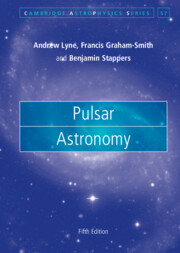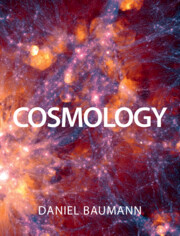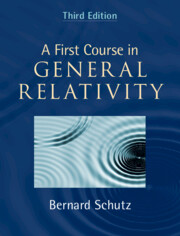Refine listing
Actions for selected content:
16950 results
10 - Millisecond Pulsars
- from Part II - Observed Physical Characteristics
-
- Book:
- Pulsar Astronomy
- Published online:
- 21 July 2022
- Print publication:
- 04 August 2022, pp 162-180
-
- Chapter
- Export citation
Part III - Neutron Star Physics
-
- Book:
- Pulsar Astronomy
- Published online:
- 21 July 2022
- Print publication:
- 04 August 2022, pp 211-212
-
- Chapter
- Export citation
19 - Interstellar Scintillation and Scattering
- from Part IV - Environments and the Interstellar Medium
-
- Book:
- Pulsar Astronomy
- Published online:
- 21 July 2022
- Print publication:
- 04 August 2022, pp 322-348
-
- Chapter
- Export citation
Frontmatter
-
- Book:
- Pulsar Astronomy
- Published online:
- 21 July 2022
- Print publication:
- 04 August 2022, pp i-iv
-
- Chapter
- Export citation
Part II - Observed Physical Characteristics
-
- Book:
- Pulsar Astronomy
- Published online:
- 21 July 2022
- Print publication:
- 04 August 2022, pp 119-120
-
- Chapter
- Export citation
Part IV - Environments and the Interstellar Medium
-
- Book:
- Pulsar Astronomy
- Published online:
- 21 July 2022
- Print publication:
- 04 August 2022, pp 297-298
-
- Chapter
- Export citation
20 - The Interstellar Magnetic Field
- from Part IV - Environments and the Interstellar Medium
-
- Book:
- Pulsar Astronomy
- Published online:
- 21 July 2022
- Print publication:
- 04 August 2022, pp 349-358
-
- Chapter
- Export citation
14 - Radius and Mass
- from Part III - Neutron Star Physics
-
- Book:
- Pulsar Astronomy
- Published online:
- 21 July 2022
- Print publication:
- 04 August 2022, pp 226-234
-
- Chapter
- Export citation
Part I - Discoveries and Techniques
-
- Book:
- Pulsar Astronomy
- Published online:
- 21 July 2022
- Print publication:
- 04 August 2022, pp 1-2
-
- Chapter
- Export citation
1 - The Discoveries
- from Part I - Discoveries and Techniques
-
- Book:
- Pulsar Astronomy
- Published online:
- 21 July 2022
- Print publication:
- 04 August 2022, pp 3-23
-
- Chapter
- Export citation
9 - The Variability of Pulsar Emission
- from Part II - Observed Physical Characteristics
-
- Book:
- Pulsar Astronomy
- Published online:
- 21 July 2022
- Print publication:
- 04 August 2022, pp 139-161
-
- Chapter
- Export citation

Pulsar Astronomy
-
- Published online:
- 21 July 2022
- Print publication:
- 04 August 2022

Cosmology
-
- Published online:
- 07 July 2022
- Print publication:
- 30 June 2022
-
- Textbook
- Export citation

A First Course in General Relativity
-
- Published online:
- 02 July 2022
- Print publication:
- 30 June 2022
-
- Textbook
- Export citation
4 - Perfect fluids in special relativity
-
- Book:
- A First Course in General Relativity
- Published online:
- 02 July 2022
- Print publication:
- 30 June 2022, pp 84-110
-
- Chapter
- Export citation
10 - Spherical solutions for stars
-
- Book:
- A First Course in General Relativity
- Published online:
- 02 July 2022
- Print publication:
- 30 June 2022, pp 267-295
-
- Chapter
- Export citation
Preface
-
- Book:
- Cosmology
- Published online:
- 07 July 2022
- Print publication:
- 30 June 2022, pp xiii-xx
-
- Chapter
- Export citation
Preface to the second edition
-
- Book:
- A First Course in General Relativity
- Published online:
- 02 July 2022
- Print publication:
- 30 June 2022, pp xi-xii
-
- Chapter
- Export citation
Part I - The Homogeneous Universe
-
- Book:
- Cosmology
- Published online:
- 07 July 2022
- Print publication:
- 30 June 2022, pp 13-14
-
- Chapter
- Export citation
12 - Gravitational wave astronomy
-
- Book:
- A First Course in General Relativity
- Published online:
- 02 July 2022
- Print publication:
- 30 June 2022, pp 360-414
-
- Chapter
- Export citation
